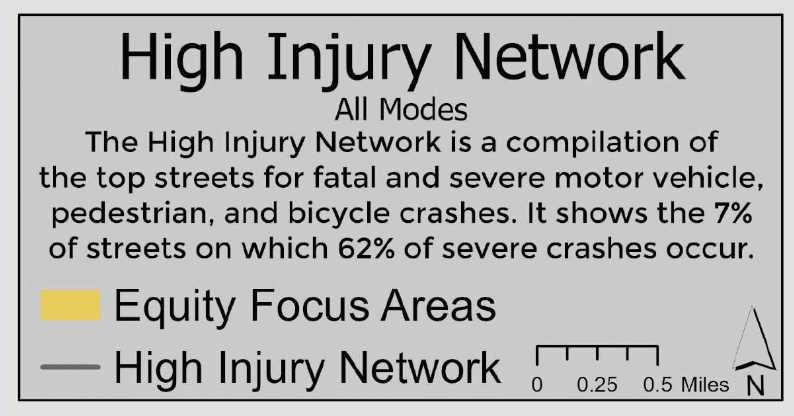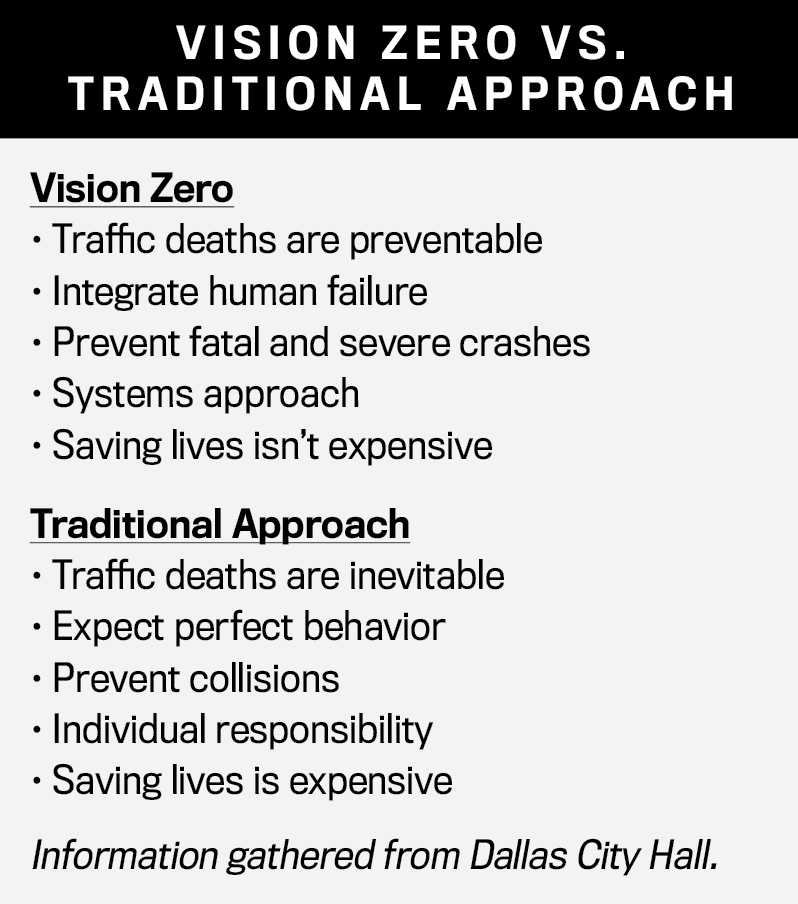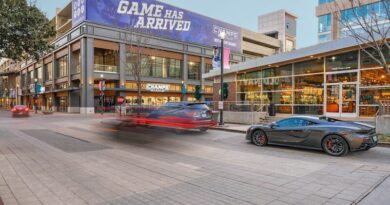Dallas Aims to End Traffic Fatalities
Recently passed Vision Zero Plan designed to halt deaths by 2030
Dallas’ new Vision Zero plan lays out 40 action items for the city to curb traffic fatalities. The goal: no traffic deaths by 2030.

Action items include:
• Improving road and sidewalk infrastructure.
• Increasing traffic safety awareness programming.
• Elevating police traffic enforcement.
• Tracking yearly progress on these efforts to spot improvements.
“I’m really happy to see this being a priority for the city, and this final draft is a result of over two years of planning, public engagement, research on best practices, data analysis, and coordination between city departments and Vision Zero task force,” council member Jaime Resendez said. “Our goals are ambitious, but they’re necessary to address severe injuries and traffic fatalities while increasing safe and equitable mobility across our city.”
The Dallas city council unanimously passed the plan June 8.
The city had the sixth most traffic deaths in the country in 2020: 222 fatalities. Also, in 2020, the city had 66 pedestrian deaths, ranking fifth in the country. Officials estimate it could take about $30 million through a bond program to make needed improvements.
“We have a bad track record in the city of Dallas of being a city that doesn’t value our pedestrians and our cyclists as much as we do our vehicles,” council member Chad West said. “I think this is exciting to see this move forward. Obviously, I’m in full support of it.”
The Vision Zero plan first came into discussion in December 2019 when the city council pledged to reach a goal of zero traffic fatalities and a 50% reduction in severe injuries by 2030. This plan recently resurfaced with an action plan compiled by city transportation officials that calls for the following improvements each year:

• New speed bumps and raised crosswalks on at least four residential streets;
• New or renovated pedestrian crossings at three spots;
• Restriping one-third of road markings;
• And implementing other road safety improvements at 15 intersections and five road corridors in high-crash areas.
The plan also recommends the transportation department brings forward speed limit changes and updates to policies regarding speed limit sign placement, pedestrian crossings, construction zones, and streetlights by the end of next year.
“This is our first time as a city saying that we will no longer be car-centric and that we are going to go forward and protect pedestrians as well as cyclists, eventually scooter riders,” council member Omar Narvaez said.
More than 50 cities across the country have Vision Zero plans, including Los Angeles and New York, and, here in Texas, Austin, Houston, and San Antonio. Vision Zero originated in Sweden and is a “collaborative, nonprofit campaign helping communities set and reach the goal of Vision Zero — eliminating traffic fatalities and severe injuries among all road users — while increasing safe, healthy, equitable mobility,” according to its website.









